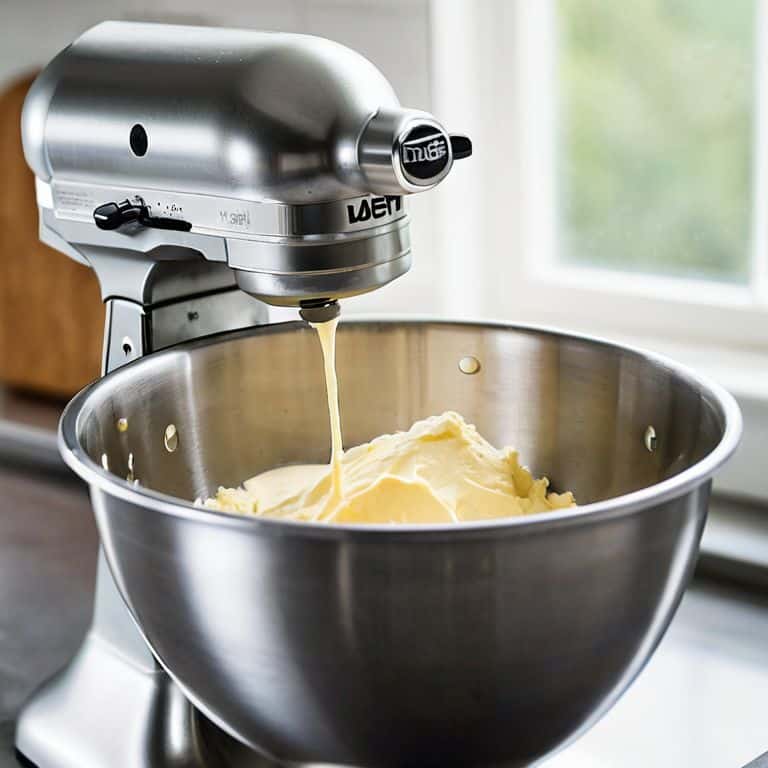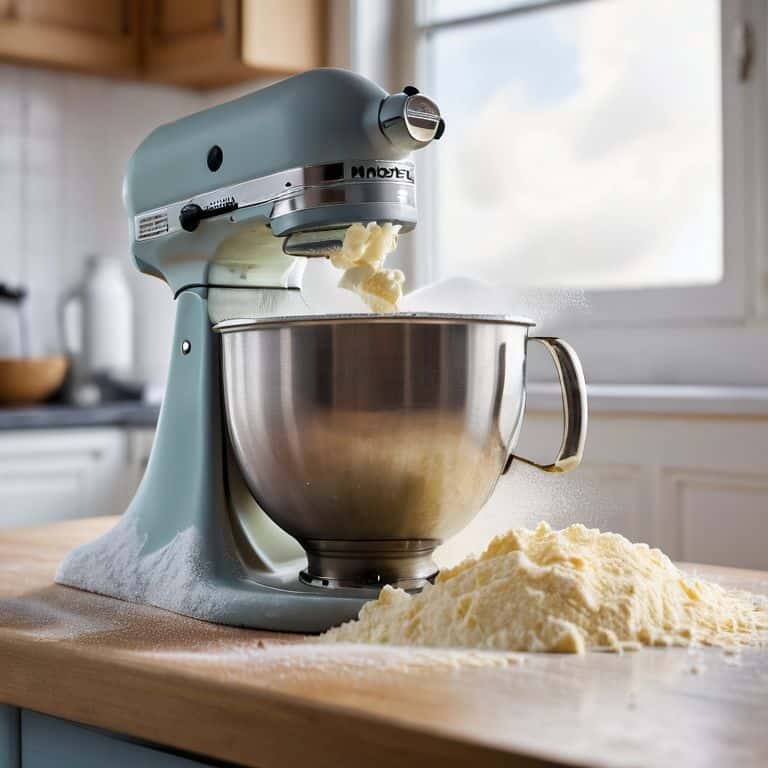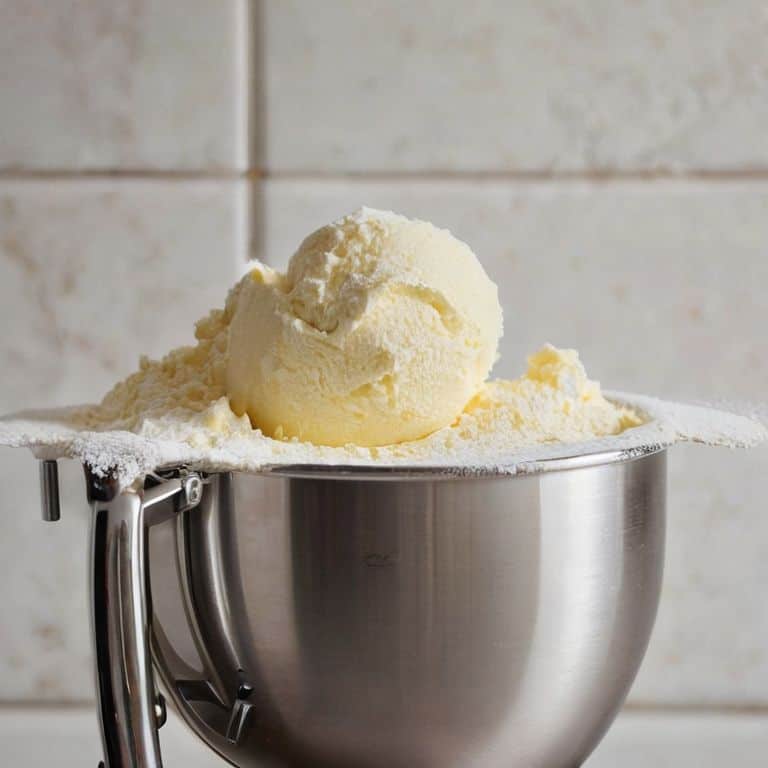I still remember the first time I tried to bake a cake from scratch – it was a disaster. The recipe called for creaming butter and sugar, a process that seemed simple enough, but I ended up with a batch of inedible, rock-hard cookies. As I looked up tutorials on what is creaming butter and sugar, I was bombarded with complicated explanations and overly complicated techniques. It was like trying to navigate a dense fog without a compass.
As a flight instructor, I’ve learned that sometimes the most complex topics can be broken down into simple, manageable steps. That’s exactly what I’ll do for you here. I’ll share my own experiences, distilling the fundamentals of creaming butter and sugar into a clear, easy-to-follow guide. My goal is to make this process accessible to everyone, whether you’re a seasoned baker or a novice in the kitchen. I’ll cut through the jargon and provide you with a step-by-step approach to mastering this essential baking technique. By the end of this article, you’ll have a solid understanding of what is creaming butter and sugar and how to apply it to your own baking adventures.
Table of Contents
Understanding Creaming Basics

To understand the basics of creaming, let’s start with the importance of creaming in baking. It’s a fundamental step that sets the stage for the entire baking process. When done correctly, creaming helps to incorporate air, increase volume, and develop the texture of your final product. Think of it like preparing an aircraft for takeoff – you need to make sure all the components are working together in harmony.
As we delve deeper into creaming basics, it’s essential to consider the butter and sugar ratio for cakes. This ratio can significantly impact the final texture and flavor of your cake. If the ratio is off, you may end up with a dense or overly sweet cake. To avoid this, it’s crucial to measure your ingredients accurately and follow a tried-and-tested recipe. I like to use the analogy of navigating through turbulence – you need to be prepared and make adjustments as needed to ensure a smooth ride.
When it comes to the actual creaming process, the choice between a stand mixer vs hand mixer for creaming can make a difference. While a stand mixer can be more efficient, a hand mixer provides more control over the process. Regardless of which tool you choose, it’s vital to avoid overcreaming consequences, such as developing the gluten in your flour, which can lead to a tough or chewy texture. By understanding these basics, you’ll be well on your way to creating delicious, fluffy cakes and cookies that are sure to impress.
Butter and Sugar Ratio for Success
To achieve the perfect blend, it’s crucial to understand the ideal balance between butter and sugar. This balance is what sets the stage for a successful baking experience. Think of it like navigating through turbulence – you need to know the right ratio to avoid any obstacles.
When it comes to the butter and sugar ratio, precision is key. A general rule of thumb is to use a 1:1 or 1:2 ratio of butter to sugar, but this can vary depending on the specific recipe and desired outcome. As a flight instructor, I always emphasize the importance of following checklists, and in baking, having the right ratio is like following a pre-flight checklist – it ensures a smooth takeoff.
Importance of Creaming in Baking
When it comes to baking, the process of creaming butter and sugar is crucial for achieving the right texture and consistency. It’s like preparing for takeoff – you need to make sure all systems are go, and in this case, that means getting your ingredients ready to work together harmoniously.
By incorporating air into the mixture, creaming helps to lighten the density of the final product, making it a essential step in recipes like cakes and cookies. This simple technique can make all the difference in the outcome, much like how a smooth flight plan can ensure a successful journey.
What Is Creaming Butter and Sugar

To understand the concept of creaming butter and sugar, let’s break it down to its simplest form. Creaming is essentially the process of combining butter and sugar to create a light and airy mixture. This is crucial for baked goods like cakes and cookies, as it helps to incorporate air and increase the volume of the final product. The importance of creaming in baking cannot be overstated, as it sets the stage for the entire baking process.
When it comes to creaming, the ratio of butter to sugar is vital. A good butter and sugar ratio for cakes is essential to achieve the right texture and flavor. If the ratio is off, it can lead to overcreaming consequences, such as a dense or tough final product. On the other hand, getting the ratio just right can result in a moist and fluffy cake. The effect of creaming on cookie texture is also significant, as it can make or break the final product.
In terms of technique, using a stand mixer vs hand mixer for creaming can make a big difference. A stand mixer can provide more power and speed, resulting in a lighter and fluffier mixture. However, a hand mixer can also be effective, as long as you’re patient and take your time. The key is to find a creaming technique for fluffier cakes that works for you and your equipment. By mastering this technique, you’ll be well on your way to baking delicious and tender treats.
Avoiding Overcreaming Consequences
To avoid the pitfalls of overcreaming, it’s essential to recognize the signs of excessive mixing. This can lead to a tough, dense final product, which is the opposite of what we’re aiming for.
When creaming butter and sugar, remember to stop when necessary, as overmixing can introduce too much air into the mixture, causing it to collapse during baking.
Mastering Creaming Technique for Fluffier Cakes
To achieve the perfect cream, you need to understand the importance of temperature control. This is where many bakers go wrong, as using butter that’s too soft or too hard can affect the overall texture of your cake.
By using the right mixing speed, you can ensure that your butter and sugar are well combined, resulting in a fluffy and tender crumb.
5 Key Tips to Master the Art of Creaming Butter and Sugar
- Start with room temperature ingredients to ensure a smooth takeoff, just like pre-flight checks for a successful flight
- Use the right tools for the job, such as a stand mixer or a wooden spoon, to avoid turbulence in your mixing process
- Don’t overcream, as it can lead to a dense and tough final product – think of it like flying into a storm, you want to navigate through it smoothly
- Pay attention to the butter and sugar ratio, as it’s crucial for achieving the perfect balance, just like adjusting your altitude to avoid air traffic
- Be patient and gentle when creaming, as rushing the process can lead to disaster – remember, a good landing is all about the approach, and in this case, the approach is a smooth and steady creaming technique
Key Takeaways for Smooth Flying in the Kitchen
Understanding the basics of creaming butter and sugar is crucial for achieving the right texture in baked goods, just like pre-flight checks are essential for a safe flight
Maintaining the right butter and sugar ratio and avoiding overcreaming are critical for mastering the creaming technique, similar to how pilots need to balance altitude and airspeed for a stable flight
By applying the principles of creaming butter and sugar and practicing the technique, you’ll be well on your way to creating fluffier cakes and improving your overall baking skills, much like how consistent practice and adherence to fundamentals improve a pilot’s skills
The Art of Creaming
Creaming butter and sugar is like navigating through turbulence – it requires patience, the right technique, and a gentle touch to reach a smooth and stable altitude, where the ingredients come together in perfect harmony.
Daniel Sato
Landing Safely with Creaming Butter and Sugar

As we conclude our journey through the world of creaming butter and sugar, let’s take a moment to review the fundamentals. We’ve covered the importance of creaming in baking, the ideal butter and sugar ratio, and the techniques for mastering this essential skill. By avoiding overcreaming and focusing on the right methods, you’ll be well on your way to creating fluffier cakes and more delicious treats. Remember, practice makes perfect, so don’t be discouraged if it takes a few attempts to get the hang of it.
As you take to the skies of baking, keep in mind that every great baker started somewhere. Don’t be afraid to experiment and try new things – and always remember that creaming butter and sugar is just the beginning. With patience, persistence, and a willingness to learn, you’ll be soaring to new heights in no time. So go ahead, preheat your oven, and get ready to take your baking to the next level. The world of culinary delights is waiting for you, and with these skills, you’ll be flying high in no time.
Frequently Asked Questions
What happens if I overcream the butter and sugar mixture?
Overcreaming is like flying into turbulence – it can get messy. When you overcream, the butter and sugar mixture becomes too light and airy, leading to a dense or soggy final product. Think of it like stalling an engine: you need to find the right balance to keep everything running smoothly.
How do I know when the butter and sugar are properly creamed for baking?
Think of it like checking your aircraft’s instruments – you’re looking for a smooth, even consistency. Stop creaming when the mixture is light, fluffy, and almost double in volume, like a gentle climb to cruising altitude. That’s when you know you’ve reached the perfect blend.
Can I use a stand mixer or hand mixer to cream butter and sugar, or is it better to do it manually?
When it comes to creaming butter and sugar, you’ve got options – just like choosing your navigation aids for a flight. You can use a stand mixer, hand mixer, or go manual. I recommend starting with a stand mixer for efficiency, but manual mixing can be just as effective, especially for smaller batches, and it’s a great way to develop a feel for the ingredients, much like getting a sense of your aircraft’s handling.
